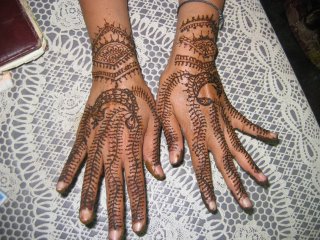
Various mehndi designs
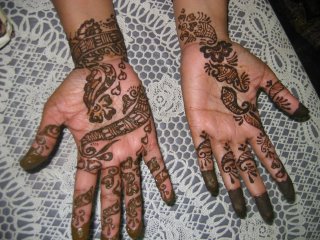
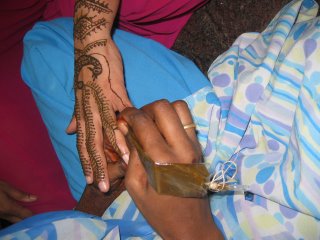



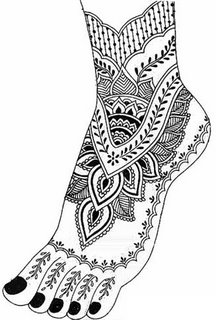
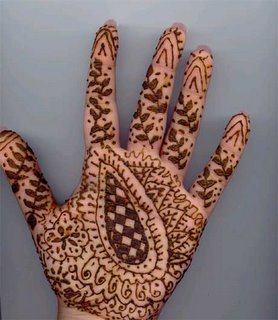
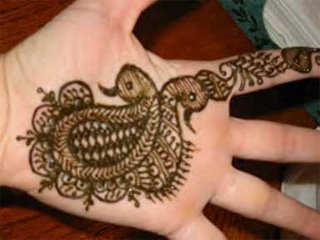
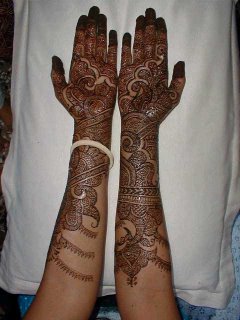
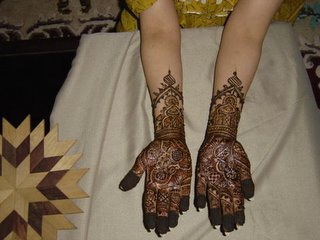 Mehndi usually denotes the application of henna as a temporary form of skin decoration. This usage is popular in the Middle East, North Africa and South Asia as well as expatriate communities from these areas. It is usually drawn on the hands and feet, where the designs will last the longest.
Mehndi usually denotes the application of henna as a temporary form of skin decoration. This usage is popular in the Middle East, North Africa and South Asia as well as expatriate communities from these areas. It is usually drawn on the hands and feet, where the designs will last the longest.Henna paste is usually applied to the skin using a plastic cone or a paint brush, but sometimes a small metal-tipped jacquard bottle used for silk painting (a jac bottle) is used. The affected area is then wrapped with tissue, plastic, or medical tape to lock in body heat, creating a more intense colour on the skin. The wrap is worn overnight and then removed. The final colour is reddish brown and can last anywhere from two weeks to several months depending on the quality of the paste.
The patterns of mehndi are typically quite intricate, and predominantly applied to brides before wedding ceremonies. However, traditions in Bangladesh, Kashmir and Sudan sometimes expect bridegrooms to be painted as well. In Rajasthan (northwest India), where mehndi is a very ancient folkart, the grooms are given designs which are often as elaborate as those for brides
http://en.wikipedia.org/wiki/Mehndi
No comments:
Post a Comment